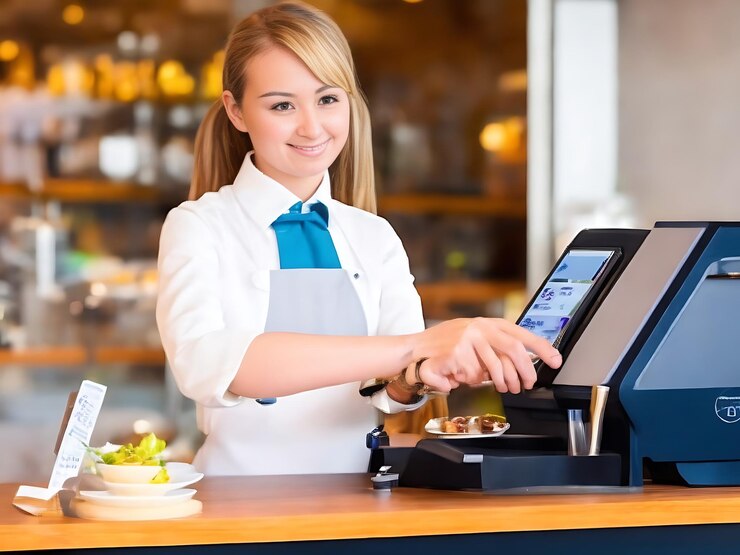When it comes to running a successful restaurant, the efficiency of your operations can make or break your business. A robust Point of Sale (POS) system is a cornerstone of that efficiency, streamlining everything from order taking to financial management. But with so many POS systems available, how do you choose the one that’s right for your restaurant? Here are five key features you should look for in a restaurant POS system to ensure it meets your needs and enhances your business operations.
1. User-Friendly Interface
One of the most critical aspects of a restaurant POS system is its ease of use. A user-friendly interface is essential because it affects how quickly and efficiently your staff can operate the system. Consider the following:
- Intuitive Design: The system should have a clean, easy-to-navigate interface that staff can quickly learn and use without extensive training. Look for systems with touch-screen capabilities and customizable layouts that fit the flow of your restaurant’s service.
- Training and Support: Even the most intuitive system might require some training. Choose a POS provider that offers comprehensive training resources and ongoing support. This ensures that your staff can troubleshoot problems quickly and continue to use the system effectively.
A user-friendly interface not only reduces errors and speed up service but also helps maintain a smooth operational flow, especially during busy periods.
2. Integrated Inventory Management
Effective inventory management is crucial for minimizing waste, controlling costs, and ensuring you never run out of essential items. A POS system with integrated inventory management can provide significant advantages:
- Real-Time Tracking: Look for a POS system that offers real-time inventory tracking. This feature allows you to monitor stock levels continuously and receive alerts when items are running low.
- Automatic Updates: An integrated system can automatically update inventory levels as sales are made, which helps keep your data accurate and up-to-date. This minimizes the need for manual stocktaking and reduces the risk of human error.
- Supplier Integration: Some POS systems offer integration with suppliers, making it easier to place orders directly from the system. This feature can streamline the ordering process and ensure you get the best prices and timely deliveries.
By automating inventory management, you can save time, reduce costs, and focus more on delivering exceptional customer experiences.
3. Comprehensive Reporting and Analytics
Data-driven decisions are essential for optimizing restaurant performance. A POS system with robust reporting and analytics features can provide valuable insights into various aspects of your business:
- Sales Reports: Detailed sales reports help you understand peak times, popular menu items, and overall revenue trends. This information can guide menu adjustments, staffing decisions, and promotional strategies.
- Customer Insights: Advanced POS systems can track customer preferences and purchasing patterns. This data enables personalized marketing efforts, loyalty programs, and improved customer service.
- Financial Reports: Comprehensive financial reporting helps you monitor expenses, track profitability, and manage taxes. Look for a system that generates detailed profit and loss statements, expense reports, and other financial metrics.
Access to actionable insights allows you to make informed decisions, improve operational efficiency, and drive profitability.
4. Payment Processing Flexibility
In today’s fast-paced environment, customers expect a variety of payment options. A versatile POS system should support multiple payment methods to accommodate your customers’ preferences:
- Credit and Debit Cards: Ensure the system can process various credit and debit cards, including contactless payments like Apple Pay and Google Wallet.
- Mobile Payments: With the rise of mobile wallets and payment apps, having a POS system that integrates with these technologies can enhance customer convenience and speed up transactions.
- Gift Cards and Loyalty Programs: If you offer gift cards or run a loyalty program, make sure the POS system can handle these transactions seamlessly. Integration with your loyalty program can also provide valuable data on customer behavior.
By offering diverse payment options, you enhance customer satisfaction and streamline your checkout process.
5. Customization and Integration Capabilities
Every restaurant pos has unique needs, and a one-size-fits-all POS system might not cover all your requirements. Look for a system that offers customization and integration capabilities to tailor it to your specific business needs:
- Customizable Menus: The ability to customize your menu layout, item descriptions, and pricing within the POS system is crucial. This flexibility allows you to make changes quickly and accurately reflect your offerings.
- Third-Party Integrations: Check if the POS system integrates with other software and tools you use, such as accounting software, reservation systems, and online ordering platforms. Integration can streamline operations and reduce the need for manual data entry.
- Scalability: As your restaurant grows, your POS system should be able to scale with you. Look for systems that offer modular features and can expand to accommodate additional locations or increased transaction volumes.
Customizability and integration ensure that the POS system aligns with your specific needs and supports your business’s growth.
Conclusion
Choosing the right POS system for your restaurant is a critical decision that can impact your operational efficiency, customer satisfaction, and overall success. By focusing on these five key features—user-friendly interface, integrated inventory management, comprehensive reporting and analytics, payment processing flexibility, and customization and integration capabilities—you can select a POS system that not only meets your current needs but also supports your future growth.
Investing in a high-quality POS system can streamline your operations, reduce costs, and enhance the dining experience for your customers. Take the time to evaluate your options carefully, and choose a system that will help your restaurant thrive in a competitive industry


